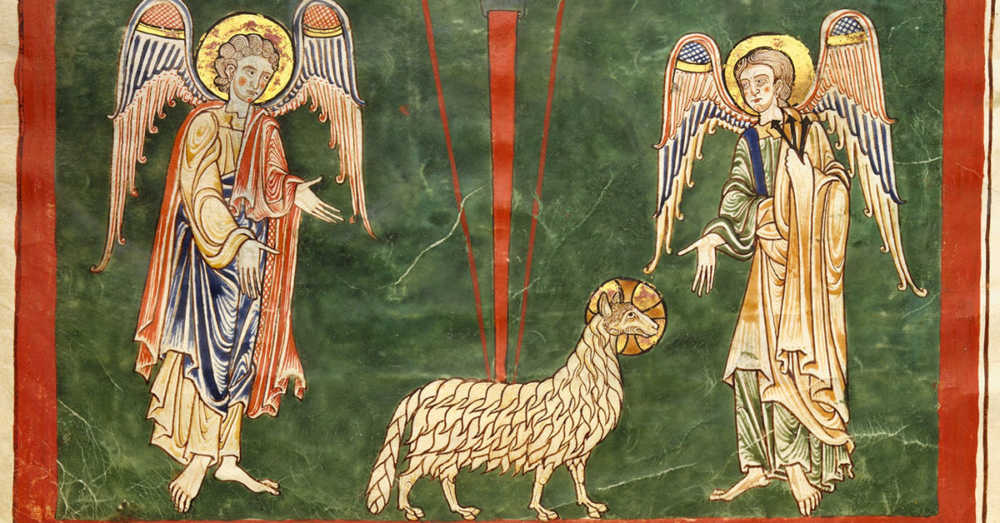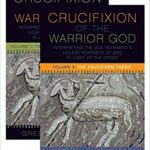We run our website the way we wished the whole internet worked: we provide high quality original content with no ads. We are funded solely by your direct support. Please consider supporting this project.

What Is God’s Glory?
In John 12 we find a view of God’s glory that challenges many modern notions of what the glory of God means. In this passage, we find that Jesus was “troubled” by the cross that lay ahead to such an extent that he wanted to cry out, “Father, save me.” But Jesus quickly expresses his resolve to go forward by saying, “No, it was for this very reason that I have come to this hour.” Then, with a view towards his crucifixion, Jesus exclaims: “Father, glorify your name,” at which point the voice of the Father thunders from the sky: “I have gloried it, and will glorify it again.” Jesus then goes on to declare: “when I am lifted up from the earth, I will draw all people to myself.” And just to make sure readers did not miss the point, John adds: “He said this to show the kind of death he was going to die” (12:27-8, 31-3).
This passage unambiguously identifies Jesus’ crucifixion as the “hour” when he will “glorify” the Father’s “name.” In ancient Jewish culture, to speak of a person’s “name” was to speak about their character and reputation. So, Jesus and the Father are both indicating that the Father’s character would most clearly shine forth—be “glorified”—when Jesus was crucified. While Jesus reflects the Father’s cruciform character throughout his ministry, the Father is “most glorified through the…‘lifting-up’… of the Son,” as Andrew Moody notes. Similarly, Gary Burge observes that, while God was of course glorified in Jesus’ miracles, it is only “on the cross that the mysterious, unfathomable glory of God is to be found.”
Colin Gunton argued that “[The glory of Christ is] lived up on the cross, and only through the trial of death is elevated to the glory that is reigning with the Father… if it is true that those who have seen him have seen the Father, then it is the Father who is revealed in the incarnate humanity of this man glorified through humbling.”
On top of this, Jesus tells us that it was “for this very reason” that he came into the world. As N.T. Wright puts it, the supreme glorification of the Father on the cross was “the climax and purpose of his whole work.” For, as Wright goes on to note, “in being thus ‘lifted up’…Jesus will draw all people to himself. How could it not be so, if indeed his cross is the true revelation of the true God, and if what we see in that revelation is the face of love?”
Now, if the crucifixion is the “climax and purpose of Jesus’ work,” we should understand everything else Jesus taught and did from this vantage point. To put it differently, since the cross was the supreme glorification of the Father, then the many other lesser ways Jesus glorified the Father should be understood as anticipating, and pointing toward, this event.
Let’s think about this another way. If Jesus is the center to which all Scripture points, then the cruciform glory of God that was supremely revealed on the cross must be regarded as the epicenter of this center. On this note, it’s significant that, when the resurrected Jesus “explained… all Scriptures concerning himself” to the disciples on the road to Emmaus, it was primarily to demonstrate that “the Messiah [had] to suffer these things,” which the disciples themselves had witnessed (Lk 24:26-7). And later, when Jesus “opened” the “minds” of the apostles “so they could understand the Scriptures,” it was primarily so they could see that it declared that “[t]he Messiah will suffer and rise from the dead on the third day” (vv.45-6).
What a strange glory!
—Adapted from Cross Vision, pages 37-38
Category: General
Tags: Character of God, Cross Vision, Crucifixion, Crucifixion of the Warrior God, Cruciform Theology, Glory
Related Reading

Reviewing the Reviews: Derek Flood
In this second “Review of the Reviews” of Crucifixion of the Warrior God, I will discuss the three-part review of Derek Flood. In part 1 Derek provides a nice overview of the Introduction through chapter 2. He correctly notes that Greg’s goal in writing the book is to show how it is possible to affirm…

Crucifixion of the Warrior God Update
Well, I’m happy to announce that Crucifixion of the Warrior God is now available for pre-order on Amazon! Like many of you, I found that the clearer I got about the non-violent, self-sacrificial, enemy-embracing love of God revealed in Christ, the more disturbed I became over those portraits of God in the Old Testament that…

Thinking Theologically
In a previous post, I challenged the common notion that the Scripture is the foundation or the center of our faith. Instead, it’s my conviction that the only place to begin is Jesus Christ. Paul says that Jesus Christ is the foundation” (1 Cor 3:11). And Peter proclaimed that Jesus is the “cornerstone” that “the…

The Problem with Christocentrism
As we’ve discussed in the previous posts, there has been a growing move toward a Christocentric orientation in theology since Barth, and especially over the last fifty years. I enthusiastically applaud this trend, for I’m persuaded it reflects the orientation of the NT itself, so far as it goes. The trouble is, it seems to…

Podcast: Do We Apply a Cruciform Lens to the Writings of Paul Even Though He Writes After Christ?
Greg talks about Paul and Peter and the slow acclimation of Christ’s message in the early church. http://traffic.libsyn.com/askgregboyd/Episode_0413.mp3

Crucified Transcendence
If our thinking about God is to be faithful to the New Testament, then all of our thinking about God must, from beginning to end, be centered on Christ. I’m persuaded that even our thinking about God in his transcendent, eternal state should begin and proceed with the Pauline conviction that we know nothing “except…
